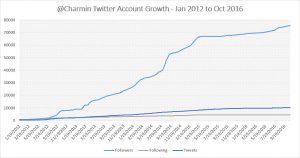The Marketer’s (Abbreviated) Guide to Love: How to overcome your own self-interest and become a better marketer
The trouble with human relationships is that at the end of the day, all of us are alone — trapped in the cosmos of our selves. Add to that the problem of our own mortality, and you’ve got a perfect recipe for failed relationships.
Yes, it’s a grim place to start a marketing blog post, but bear with me for a moment. If you’re smart, you’ll be thinking about what relationships have to do with marketing (if you’re really smart, you’ll know they have everything to do with it) while you wade through the next few of paragraphs.
I’m stretching the definition a bit, but Kierkegaard and the 20th century existentialists called the result of this fundamental human condition “angst.”
Whatever you want to call it, it’s most likely the main problem humanity has faced since the beginning of consciousness.
The good news is that there are a number of ways to deal with our angst:
- We can try to deny it by becoming a part of the herd
- We can try to medicate it with sex, drugs and rock & roll
- We can try to avoid it with power and money
- We can try to displace it with masochism or sadism
But the healthiest way humanity has found to deal with the problem, as many Beatles songs attest, is love.










